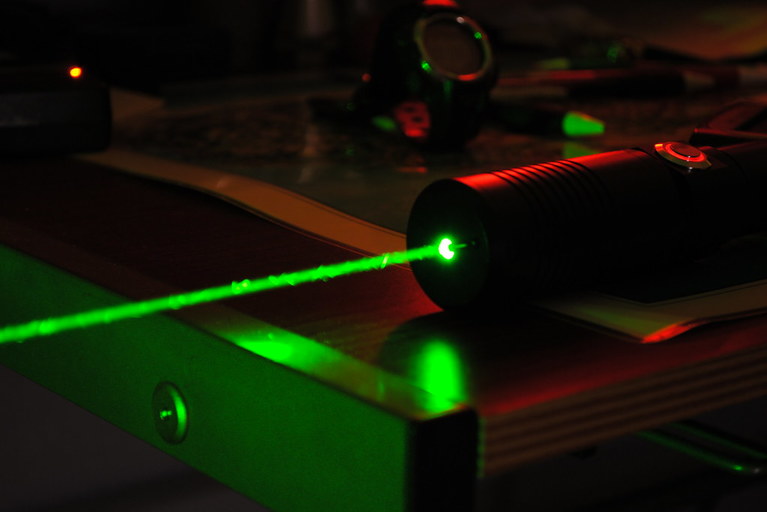
Today we are about to discuss a gadget that is being used in the vast area from war to hospitals. Many of them are familiar with this gadget but not aware of its working. This is LASER (Light Amplification by Stimulated Emission of Radiation). This invention is a breakthrough to solve many problems whether it is for observation of earth outer space or for analyzing the deep ocean, LASER is being used everywhere to make human life fast and safe. Few people thought that LASER would prove to be a useful gadget only but ultimately LASER launched a new scientific field and opened the door for a multi-billion dollar industry.
What is LASER?
LASER is an acronym for light amplification by stimulated radiation. Its full form is self-explanatory, where we can see that LASER is a device that amplifies the light. This gadget needs coherent light as an input to amplify it by using the optical amplification process.
A coherent light beam has a fixed relationship between the phase of waves in a beam of light radiation of a single frequency, in simple words, it means that a coherent light beam has a similar phase and frequency value.
Inside LASER Technology:
Before understanding the engineering behind the LASER, it is necessary to understand the atoms and their behavior. In this universe approximately 100 different kinds of atoms are present. Everything we see is made of these 100 atoms in an unlimited number of combinations. Arrangements of these atoms determine whether the atoms make up a cup of coffee or the fizz of your soda can. In every material, these atoms are constantly vibrating, moving, and rotating whether it is your chair or glass. Solids are actually in motion! Based on atomic motions atoms can be in different states of excitation. These different states represent several energy levels of the atom. When we apply a lot of energy to an atom, it can leave its basic energy state (ground-state energy level) and move to an excited level. Atom remains in this excited energy level for certain periods of time depending on the level of energy that is applied to the atom via heat, light, or electricity.
What happens after absorption of energy in an atom?
When we apply some form of energy over an atom, we might expect that some of the electrons (inside atom) in the lower-energy orbits would transition to higher-energy orbits farther away from the atom nucleus. This phenomenon is the core idea of how atoms work in terms of LASER’s.
Once an excited electron moves to a higher-energy orbit, it eventually wants to return to the ground energy level inside an atom. It is also possible that some of the electrons in lower-energy levels would transition to higher-energy levels farther away from the nucleus. Once an electron moves to a higher-energy level or orbit, it eventually wants to return to its initial energy level or ground-state. When it happens, the excited electron releases its energy as a photon. Photon is also known as the smallest particle of light.
This emitted photon is related to form LASER system. In a LASER system, the lasing medium is forced or pumped to get the atoms into an upper or excited energy-level. Generally, intense light or electrical discharge excited the material atoms to create a large accumulation of excited-level atoms. This excitation process is known as optical pumping. Excited-level atoms mean these atoms are having most of their electrons in upper energy orbits. This process increases the number of atoms in an excited state as compared to ground-state energy level. This is population inversion where the number of atoms increases in upper energy level.
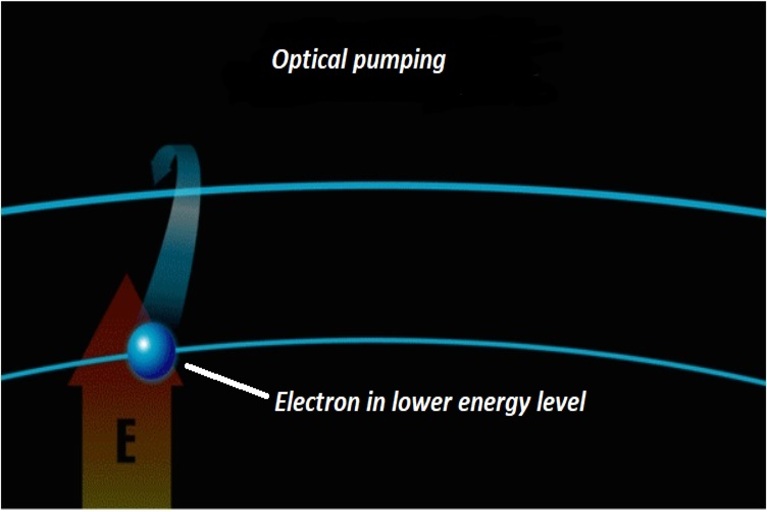
optical pumping in laser
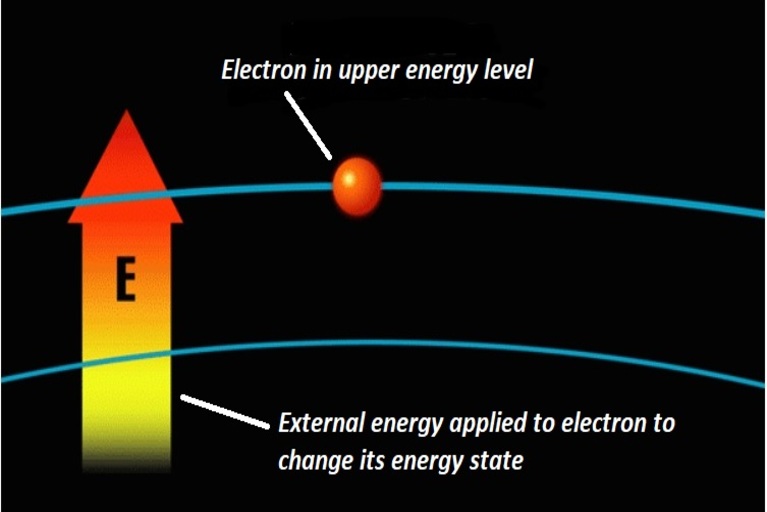
Electron in upper energy level for certain time period
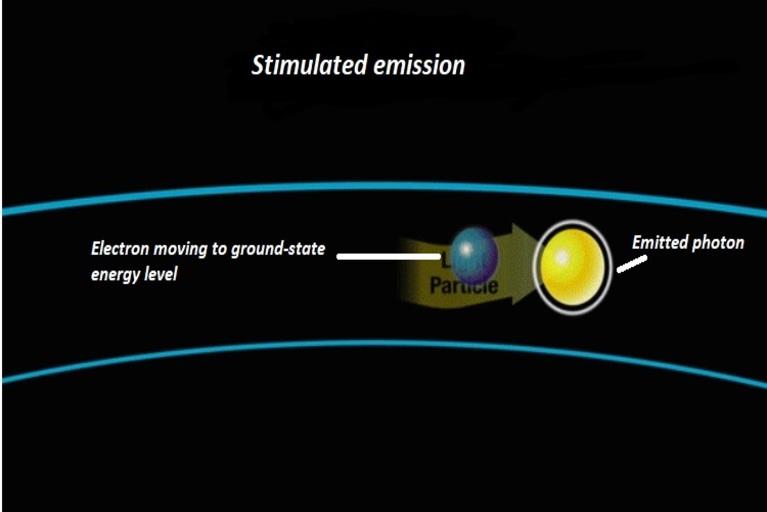
Generation of photon while coming back to ground state
The electrons simply relax for a certain period in upper energy level and while returning back they emit some energy in the form of light energy (photons). The generated photon has a distinct wavelength (color of light) that mainly depends on the level of the electron energy when the photon is released. That’s how in a LASER system many identical atoms with electrons in identical energy levels will release photons with similar wavelengths to form a laser beam.
Types of LASER:
In modern are vast varieties are present for LASER. Each and every type has its merit with some limitations. We can classify LASER in the form of solid, liquid, gas, or semiconductor. Lasers are commonly designated by the type of lasing material employed.
Solid-state lasers:
This kind of laser lasing material (material that atoms will go into upper energy level) is distributed in a solid matrix. Here lasing material crystal is usually a cylindrical rod mounted in an optical cavity those results in a simple versatile laser beam. The common members of the solid-state laser family are the ruby and neodymium laser. In solid-state lasers, light energy is used as a pumping source for lasing material atoms. Light sources such as flashtube, flash lamps, arc lamps, etc.
Gas lasers:
In a gas laser, an electric current is discharged through gas inside the laser medium to create a laser beam. The lasing material in the gas laser is in the gaseous state. Typically the lasing material is formed with a mixture of gases. This mixture is packed up into a glass bulb. The packed mixture of gases acts as a laser medium. A gas laser is the first laser that works on the principle of converting electrical energy into light energy. Gas lasers are used in applications that need a coherent and high-quality light beam.
Semiconductor lasers:
Semiconductor lasers are the result of the invention of semiconductors. These lasers are playing important role in our daily life from your video player to LCD projectors. These lasers are very cheap, compact, and need less power for their functioning. Semiconductor lasers, also known as laser diodes, are different from solid-state lasers because in solid-state lasers light energy is used for optical pumping whereas in semiconductors laser electrical energy is used as the pumping source. Here a p-n junction of semiconductor diode forms the active medium or lasing medium.
Applications:
The coherent and monochromatic nature of the laser light beam makes it super special. At present time the laser is being used in the medical field for surgeries and scanning, in industries for welding and cutting, in surveying and ranging equipment, in garment industries, in communication like optical-fiber communication, in heat treatment of metals, and more.
Thanks for reading. See you soon with another exploration!

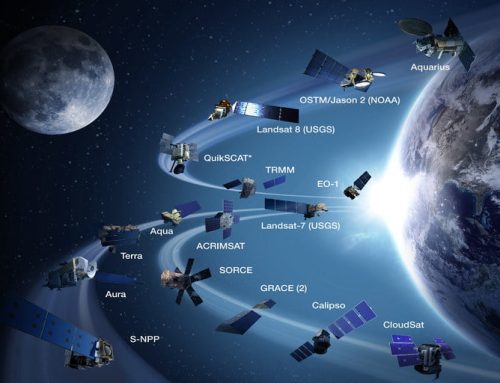




[…] The term holography is self-explanatory, means of creating a unique photographic image without using any lens. The principle of holography was discovered by Hungarian electrical engineer Dennis Gabor. Gabor considered the possibility of improving the resolving power of the electron microscope. For this, he followed two steps, first by utilizing the electron beam to make a hologram of the object and the second is examining this created hologram with a beam of coherent light like LASER. […]